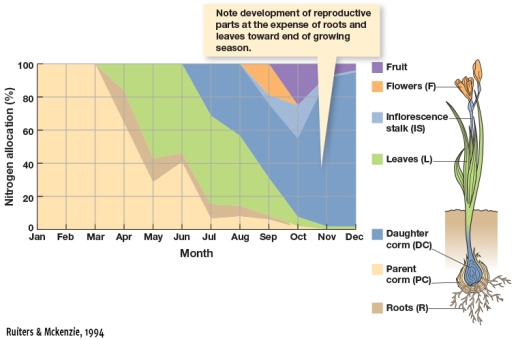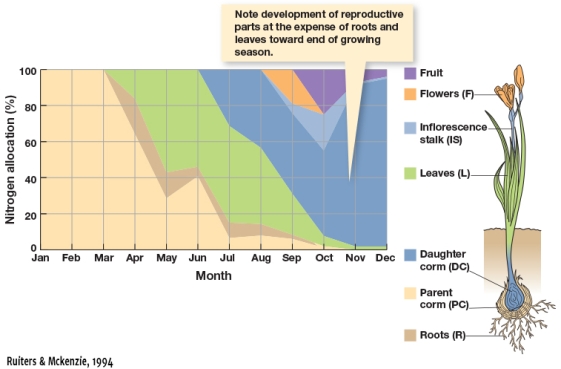Course
Ecology
Study Pack
Set 5 Birth Death And Movement
Question 1
(Multiple Choice)
Free
In Figure 5.5,from autumn to spring (March to October)what is the trend in nitrogen allocation to parts of the plant not directly involved with reproduction for this perennial plant from the Southern Hemisphere? 

A) The trend is negative as more nitrogen is being sent to parts associated with reproduction.
B) The trend is positive since the plant is investing in reserves for winter
C) The trend is flat.
D) The trend is negative as less and less nitrogen is being sent to parts associated with reproduction.
Answer
Question 2
(Multiple Choice)
Free
In a mark and recapture study you initially collect 50 frogs.You mark and release those 50 and plan to collect again in another week.The following week you collect 50 frogs and 10 of them are from your previous mark and recapture.How large would you estimate the population to be?
A) The population is estimated to contain approximately 90 individuals
B) The population is estimated to contain approximately 250 individuals
C) The population is estimated to contain approximately 100 individuals
D) None of the above
Answer
Question 3
(Multiple Choice)
Free
According to Figure 5.5,which of the following statements is accurate about the perennial Sparaxis grandiflora found in South Africa? 

A) In January all nitrogen is being supplied to parts of the plant associated with reproduction
B) Leaves and roots receive approximately the same amounts of nitrogen
C) Fruit receive a small proportion of the cumulative nitrogen a plant uses
D) In summer, leaves receive a greater proportion of nitrogen than the daughter corm.
Answer